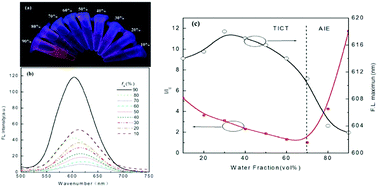A far-red-emissive AIE active fluorescent probe with large stokes shift for detection of inflammatory bowel disease in vivo†
Abstract
Inflammatory bowel disease (IBD) is a group of chronic remittent or progressive inflammatory gastrointestinal tract diseases, accompanying impaired barrier function. Effective real-time monitoring of the IBD progression in time is critical to the success of bowel therapy and the improvement of patient outcomes. However, there is relatively little information regarding the detection of the intestinal barrier. In this study, we have judiciously designed and synthesized a novel D–π–A based far-red-emissive AIE active fluorescent Probe (PTZB-FR). PTZB-FR exhibits properties suitable for in vivo imaging, such as FR emission, good photostability, large Stokes shift (∼184 nm), and low cytotoxicity. Moreover, confocal fluorescence microscopy and flow cytometry assay reveal the effective internalization of PTZB-FR. Most importantly, imaging living mice after oral administration of PTZB-FR confirms that fluorescence in the intestinal lumen diminishes in Dextran sulfate sodium (DSS)-induced colitis, which is attributed to disruption of intestinal barrier integrity caused by a DSS-induced colitis model, highlighting PTZB-FR as a promising reagent in the detection of intestinal barrier function during clinical examination.



 Please wait while we load your content...
Please wait while we load your content...